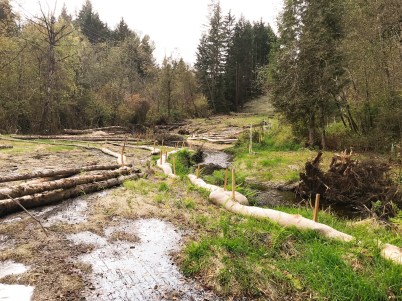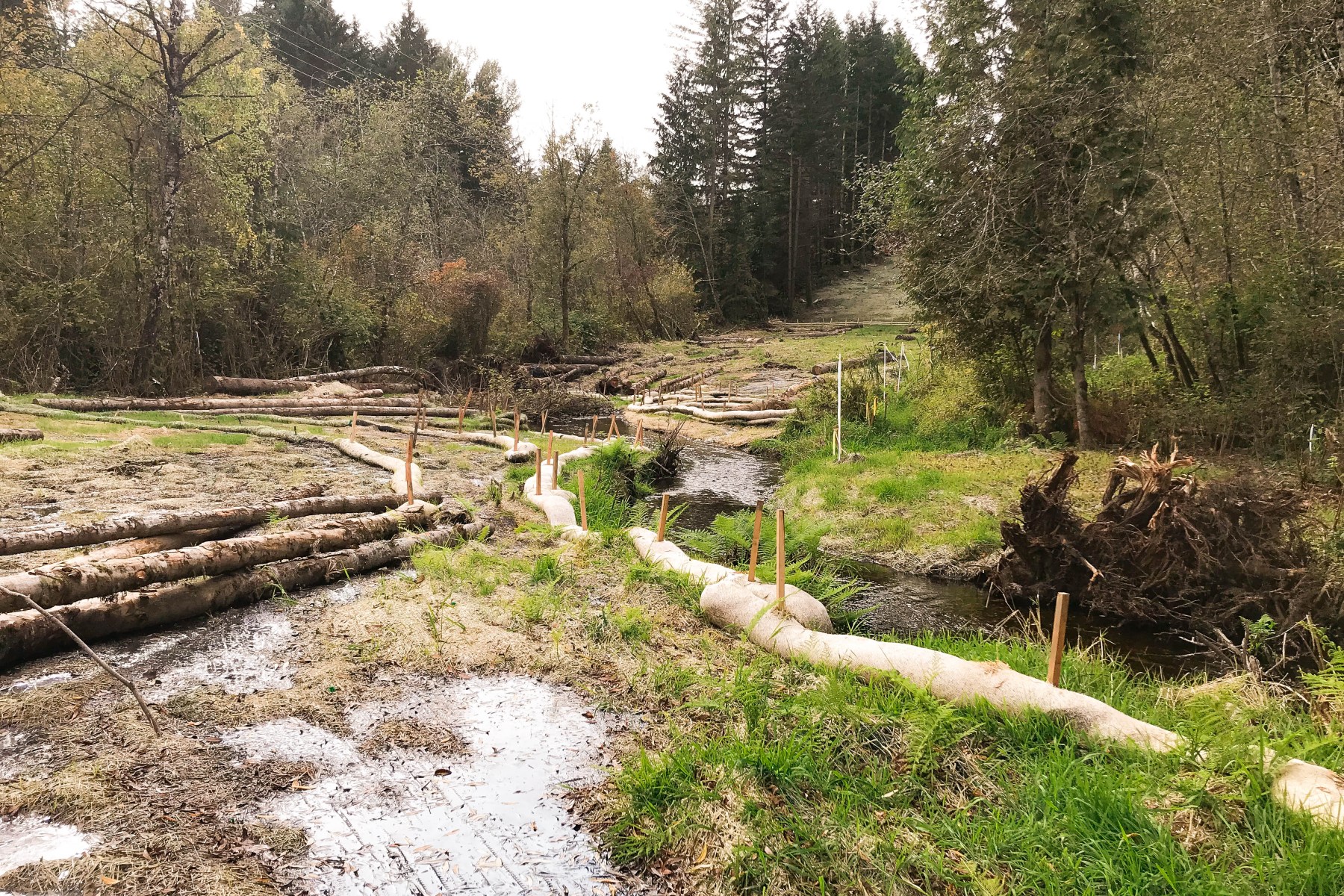
Williams places environmental stewardship very highly in everything we do. And the North Seattle Lateral Upgrade (NSLU) project through Snohomish County, Washington, last year offers many examples of responsible stewardship in action.
As part of permit requirements for the NSLU project, Williams agreed to retain all large woody material from trees felled within 200 feet of all fish-bearing streams along the project right-of-way. The specific request from the Muckleshoot Indian Tribe was for all woody debris greater than 4-inches in diameter to be placed into and around the streams to improve fish habitat.
This was a challenging task for multiple reasons. The volume of woody debris collected could easily lead to damming of the streams where the lateral crosses beneath them. It was also difficult because it created conflicts with landowners’ preferences in many cases and created a significant amount of last-minute planning coordination changes with our contractors.
The project team found a creative solution by placing some of the wood back into the streams, then dispersing the remaining wood along the banks of the streams within the 200-ft. buffer. Additionally, Williams placed 1-inch, round river rock cobble in the streams, which also helps improve water quality and fish habitat.
“It’s a great enhancement to these streams,” said Toby Schwalbe, environmental specialist with Williams. “We put our best foot forward, and we were able to meet the permit conditions, and I’m very proud of the way it has turned out.”
In the coming months, Williams will be planting dogwood and willow trees along the banks of these streams and an even more diverse array of native woody shrubs and trees within all stream riparian areas, wetlands and their buffers. This also further enhances the streams by returning shade and nutrients to them, as well as helping filter stormwater runoff.
“This effort just goes to show our commitment to environmental stewardship during all phases of a construction project,” Schwalbe said.
